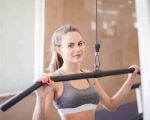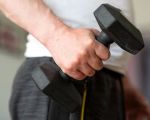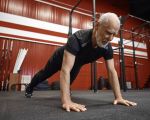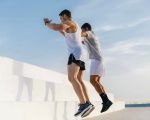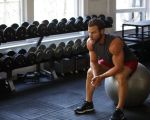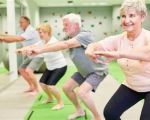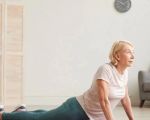- #understanding-balance - Understanding-Balance-Challenges-in-Seniors
- #key-workouts - Key-Gym-Workouts-for-Balance
- #preparing-sessions - Preparing-for-Gym-Sessions
- #client-story-transformation - Client-Story:-Regaining-Confidence
- #recommendation-fitness - Why-Choose-Fitness-for-Senior-Balance
1. Understanding Balance Challenges in Seniors
1.1 Physiological Changes with Age
1.1.1 Muscle Atrophy and Strength Loss
As we age, muscle fibers shrink and strength declines, making it harder to control movements. This natural process affects lower-body stability, which is why gym workouts for improving balance seniors often focus on preserving muscle mass.
1.1.2 Proprioception and Vestibular Decline
Sensors in joints and the inner ear help maintain equilibrium. With age, these systems become less sensitive, leading to dizziness or unsteadiness. Targeted exercises can retrain proprioception and bolster vestibular responses.
1.2 Importance of Balance for Daily Living
Good balance reduces fall risk, supports independence, and enhances confidence. Seniors who master stability exercises experience fewer injuries and can enjoy activities like gardening or dancing without fear.
2. Key Gym Workouts for Improving Balance Seniors
2.1 Stability and Core Strength
2.1.1 Single-Leg Stance Variations
Standing on one leg strengthens ankle stabilizers and proprioceptors. Begin near a support bar, hold for 20–30 seconds, then progress to eyes-closed or cushion surfaces to increase challenge.
2.1.2 Plank and Anti-Rotation Holds
Forearm planks engage deep core muscles that stabilize the spine. Adding a Pallof press (band-resisted anti-rotation) further improves lateral stability, helping maintain upright posture during movement.
2.2 Strength and Flexibility Training
2.2.1 Leg Press and Hamstring Curls
Controlled leg press repetitions build quadriceps and glute strength, crucial for rising from chairs. Hamstring curls on a machine improve posterior chain flexibility, reducing the risk of muscle strains during balance tasks.
2.2.2 Hip Abductor and Adductor Machines
Balancing requires lateral hip support. Abductor and adductor exercises on gym machines reinforce the muscles that keep legs aligned during side-to-side movements.
2.3 Dynamic Movement Drills
2.3.1 Bosu Ball and Balance Pads
Using a Bosu ball or foam pad under one foot challenges stability by creating an unstable surface. Incorporating light dumbbells or medicine balls adds complexity, training the body to adapt to shifting centers of gravity.
2.3.2 Lateral Band Walks
Loop resistance bands around the ankles and sidestep to work hip stabilizers. This drill simulates everyday maneuvers like stepping off curbs, reinforcing muscle activation patterns crucial for fall prevention.
3. Preparing for Gym Sessions
3.1 Warm-Up and Safety Measures
Begin with 5–10 minutes of light cardio—walking or cycling—to increase blood flow. Follow with dynamic stretches for the hips, ankles, and shoulders to ensure joints are ready for balance work. Always inform trainers of prior injuries.
3.2 Equipment and Attire
3.2.1 Proper Footwear
Choose flat-soled, supportive shoes to maintain stable contact with the floor. Avoid overly cushioned soles that can reduce ground feedback.
3.2.2 Use of Support Props
Have a sturdy chair or rail nearby during challenging drills. As confidence grows, reduce reliance on supports to further enhance balance adaptations.
4. Client Story: Regaining Confidence Through Gym Training
4.1 Initial Setbacks
Jean, a retired teacher, struggled with unsteady steps after a minor fall. She avoided stairs and stopped attending community events due to fear of another tumble.
4.2 Transformation and Outcomes
4.2.1 Personalized Balance Program
At Fitness, Jean’s trainer crafted a routine combining single-leg stands, Bosu drills, and core holds. Within six weeks, her sway decreased by 40%, and she navigated uneven sidewalks confidently.
4.2.2 Renewed Independence
Jean now joins morning walks with friends and tends her garden without support. Her success story shows how targeted gym workouts for improving balance seniors restore both physical ability and quality of life.
5. Why Choose Fitness for Senior Balance Programs
5.1 Expert Trainers and Tailored Plans
Fitness employs certified senior fitness specialists who design balance-centric regimens based on mobility assessments. This personalized approach ensures safety and maximizes progress.
5.2 Supportive Community Environment
Group balance classes foster camaraderie and accountability. Seniors encourage one another through progress milestones, making each gym workout for improving balance seniors both effective and enjoyable.


